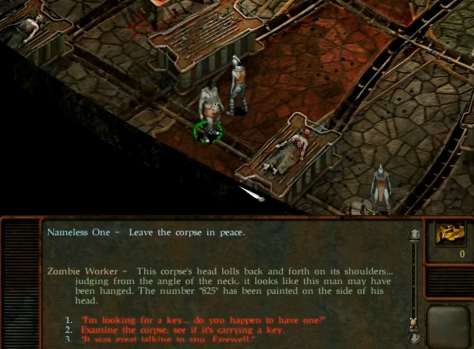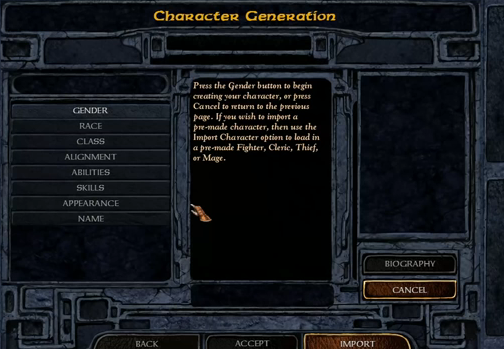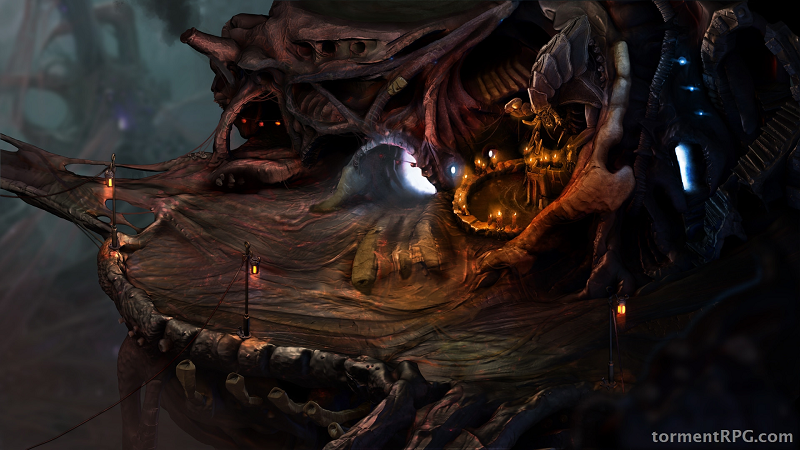With games like Divinity: Original Sin, Lords of Xulima (although that’s a borderline case given its Wizardry-like first-person perspective battles), Wasteland 2 released in 2014, and big titles like Pillars of Eternity and Torment: Tides of Numenera announced for 2015, one thing becomes obvious: isometric RPGs are making a return.
As AAA developers tried to make RPGs more cinematic with epic cutscenes, fully voiced dialog and action oriented gameplay, the subgenre was mostly forgotten by the mainstream (aside from the Neverwinter Nights series) but it’s obvious that the cult following was much bigger than expected by those who considered dialog trees, turn-based or real-time with pause-battles and a huge number of statistics to be relics of the past.
It’s hard to believe now but there used to be a time when games like that were extremely popular – Baldur’s Gate and Fallout (before Bethesda took it over) series were expensive mainstream titles in the late 1990s. The former was also the first game developed using an engine that would later become synonymous with isometric RPGs: Bioware’s (yes, the same Bioware that makes all those cinematic action-RPGs now) Infinity Engine.

D&D meets RTS
Infinity Engine was not originally supposed to be used for role-playing games. The original project for which it was developed was a multiplayer RTS game called Battleground Infinity. Over time, the focus slowly shifted towards single player gameplay and the game caught the eye of Interplay who held the license for releasing Dungeons & Dragons video games and suggested placing the game in the Forgotten Realms campaign setting. Thus, Baldur’s Gate was born.
The D&D setting influenced the gameplay of Baldur’s Gate and other games that used Infinity Engine. The characters are created by the player choosing a class, a race, an alignment and starting skills while the game rolled virtual dice to determine the stats. The dice are also used for most of the actions, especially combat-oriented (the fights use old D&D rules so noobs can expect to get confused by armor class which gives you better defense the lower it gets, and everyone’s favorite, THAC0 stat), there are even critical hits and critical failures caused by rolling a natural 20 and natural 1 respectively. Also, the magical spells need to be prepared beforehand and there’s a limit of how many of them you can have memorized. Basically, the Infinity Engine features probably the most accurate video game adaptation of D&D ruleset.
The RTS element is less obvious today but in 1998 the idea of a real-time, mouse-controlled RPG was actually pretty new. It was pioneered a year before by the original Diablo (which also took inspiration from strategy games as the idea to eschew turn-based gameplay was influenced by some of the developers’ work on the first Warcraft) – but Baldur’s Gate added controllable party members moving in different formations, a feature absent from Diablo in which everyone controlled a single character.
Infinity games

Infinity Engine did not power many games, but all the titles that used it were notable in one way or another. Baldur’s Gate was a complex, open-world game with a strong narrative and memorable characters that was also so fun to play that it became one of the most important titles in the late 1990s cRPG revival. It was a great game – but not as great as its sequel which streamlined the gameplay, improved the interface and made the narrative even more prominent by focusing on personalities and backstories of the characters, as well as the relationships between them.
The other well-known game using Infinity Engine was Black Isle’s legendary Planescape: Torment, one of the best and most unusual RPGs ever created. In this game, the players control an immortal Nameless One as he reunites with his old companions (a rather unique bunch which includes, among others, a floating skull, an insane wizard who is constantly on fire and a celibate succubus) and attempts to find out why exactly he can’t die. It’s a clever and very well written game that combines the non-linearity of computer RPGs with the dramatic, emotionally resonant narrative of the console ones (the developers even acknowledge the influence by mentioning Final Fantasy games in the credits).
Black Isle studios also used Infinity Engine to create an Icewind Dale duology. Those games are not as original as Baldur’s Gate and Planescape: Torment – they’re notable simply for being extremely fun and well-made. Also unlike other Infinity Engine titles, they’re not really focused on a narrative. Icewind Dale is more of a traditional dungeon crawler made in an isometric engine instead of a first-person one – the player creates a party and goes on to fight against hordes of enemies. It’s not as good as other Infinity Engine games but it’s still a very good game.
Infinity mods
If you don’t believe how strong the cult following of Infinity Engine games is, you probably don’t know about the strong modding community they have. Yes, have, not had. Even today there are mods for the first Baldur’s Gate still in active development.
Those mods are not just simple sprite swaps either. They range from resolution mods allowing the game to be played on widescreen monitors to completely new quests to adding tons of NPC dialog to the existing game. My favourite one has to be Baldur’s Gate Trilogy though – a mod that allows for playing all the Baldur’s Gate games and expansions as a one big game.
The modding community keeps changing the games in creative ways and developing tools that allow for easier mod creation – save editors, item creators, script compilers and many more can be found on the modders’ websites. There’s even a database of basically everything in Infinity Engine and an attempt at a cross-platform, free and open-source engine recreation that would be compatible with all IE games. It’s all more impressive when you realize that it all comes from the countless hours of reverse engineering as Bioware never released their source codes.
Infinite cycle of RPG resurrection

The impact of Infinity Engine on the RPG scene cannot be overstated. The games it powered are still being played and modded and they’re still an inspiration for many developers. In fact, the sequels to Planescape: Torment and Baldur’s Gate are being developed right now (although the latter might be a big failure given that it’s made by the creators of the ill-fated Baldur’s Gate Enhanced Edition).
The early days of Infinity Engine are, in a way, similar to how the gaming world looks today. Role-playing games were not popular in 1998 and Baldur’s Gate (along with earlier Fallout and Diablo) changed that by modernizing the formula of older titles like the later games from Ultima series, without sacrificing their depth. If all goes well, modern RPGs inspired by Infinity Engine games will do the same thing today.
After all, there are still many gamers out there that like the mixture of complexity and great storytelling who can’t wait to see this kind of experience created with modern technology. Contrary to what AAA developers will tell you, there’s nothing wrong with learning the intricate rulesets and stopping the action once in a while to read some dialog or narration. As long as the more patient gamers exist, the oldschool RPGs will keep coming back.
